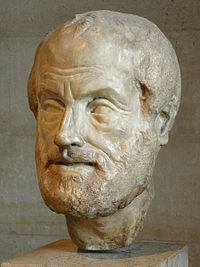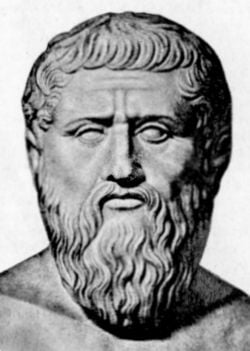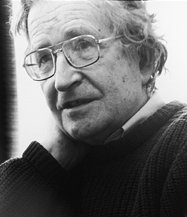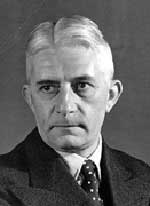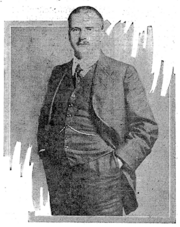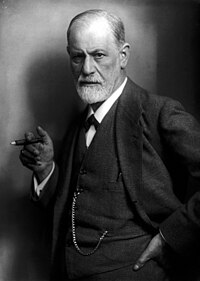Foreword
The purpose of this website is to provide a detailed look into the history and systems of the discipline of psychology. When studying the history of any discipline, the names and faces of influential figures throughout it's history is important. However, it is the thought and idea which these figures pushed forward which is of greatest importance. Thus the best way to study the history of any discipline, including psychology, is through a thorough mapping of the progression of thought, while using the influential people within the discipline's history as landmark or milestone along the map.
The undertaking of such study is vitally important. In order to fully understand and advance contemporary theory, it is necessary to have a concrete grasp on the progression of thought and theory throughout a disciplines history. For without such knowledge, knowledge of past advancements, redundant and still relevant theory, and past successes and failures, one is doomed to repeat past mistakes and progression of the discipline seems inevitably out of question.
Table of Contents
Concluding words
While this website is in no way comprehensive, it does achieve the goal of providing a somewhat detailed outline of the development of psychology thought. A more noble project would be to track the progression of the western psychological thought in the greater context of western thought as a whole, this however is far to arduous and ambitious of a project for a simple term project.
As we have seen the tradition of western psychology bares its roots the philosophical tradition tradition of ancient Greece. The most important contribution of the ancient Greek philosophers is that of materialism, empiricism, and atomism, as well as the preference for epistemic virtuousness in opposition to the blind following of dogmatic belief systems.
The western tradition from the ancient Greeks through until the late 18th century contributed much in the way of philosophical thought, particularly in the way of the scientific tradition. Disciplines aimed at the study of all imaginable phenomena began to emerge, from math, to physics, to chemistry, to biology, to physiology, and eventually to psychology. Continuing the scientific trend of associationism and quantification, early psychologist such as Wilhelm Wundtand Edward Titchner endeavored in what would become known as the structural approach to psychology.
This approach would later be challenged by a group of psychologists which would be identified as functionalist, including John Dewey and James Angell. These thinkers would reject the structuralist methodology right down to the basic questions which they asked. Where structuralists asked "what?", specifically what made up conscious experience. Functionalist would ask "why?"; what is the purpose behind such a function. Being heavily influenced by evolutionary theory, the common answer to this question was that the function of cognitive faculties is adaptive to survival.
A later group would criticize functionalist theories, stating that there is no directly observable evidence for the presence of the mind, thus it should be eliminated from psychological theory. This counterintuitive stance is that of the Behavioral school of psychology, which would be highly influential on both psychology and the general population as a whole. As a practical extension of evolutionary theory, behaviorism sought to explain the way in which learning occurs (as learning is the adaptational feature of conscious organism which allows for changing and challenging environments).
As with the these previous theories, a further group would emerge to criticize behavioral theory, due mainly to their denial of the psyche. This group of psychologist, known as Cognitive psychologist, explained organisms as complex data processing units, the operation of which could likely be described by way of algorithms. Learning in this perspective was viewed as part of maturation and was part of a biologically identifiable process.
Parallel to the emergence of the early structural and functional schools of psychology arose a drastically different perspective, Psychoanalysis, which denied much of the common roots which the previously mentioned schools of psychology had sprung. Psychoanalysis was a strongly associationistic and deterministic study, which held that the vast majority of a persons psychic development occurred as a child and that psychopathology was the result of disturbances during this developmental process. Psychoanalysis also stressed highly the vast impact which the unconscious has on our conscious mind. The claims of psychoanalysis are wide and varied, however, few are scientifically verifiable, a criticism which many from the empiricistic disciplines were avid.
As a reaction to the strongly reductionistic view which the previously mentioned thoeries have propagated, a group of psychologist began a movement known as Gestalt Psychology. These theorists operated on the premise that "the whole is greater than the sum of it's parts". The basic point being that it is pointless to attempt to disassemble mental constructs, they must be viewed as a whole to fully comprehend their use.
Finally, with a heavy influence from Festalt psychology, arose Humanistic Psychology. A discipline which placed emphasis on the person as a whole and as a member of a social context as a whole. This school was strongly opposed to both the reductionistic approach of structuralism, functionalism, and behaviorism, and the negative view of human nature which the forementioned theories and psychoanalysis propagated. Humanistic psychology to a very Aristotelean strategy in viewing all organism as having a potential and a actual drive toward that potential.
As mentioned earlier, this is not an exhaustive description of the discipline of psychology (of this it falls far short), however it does give a description of some of the major schools of psychology and the thought and influences which led to their creation.
